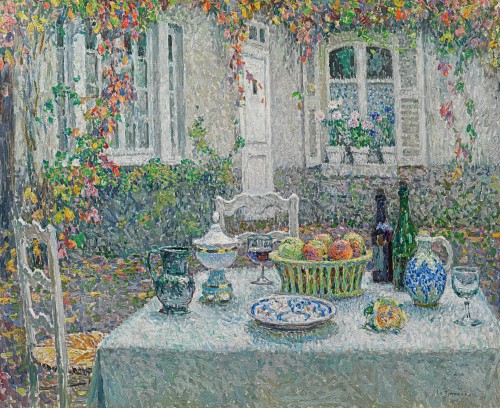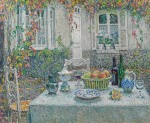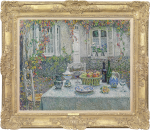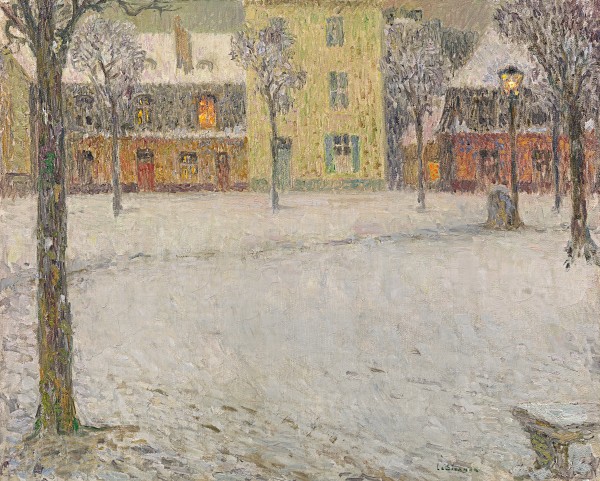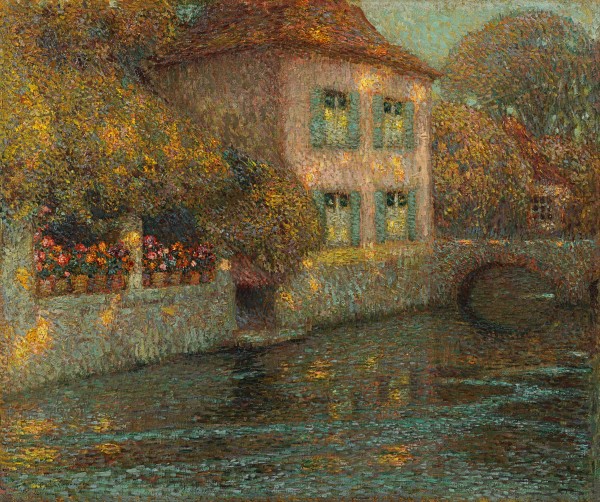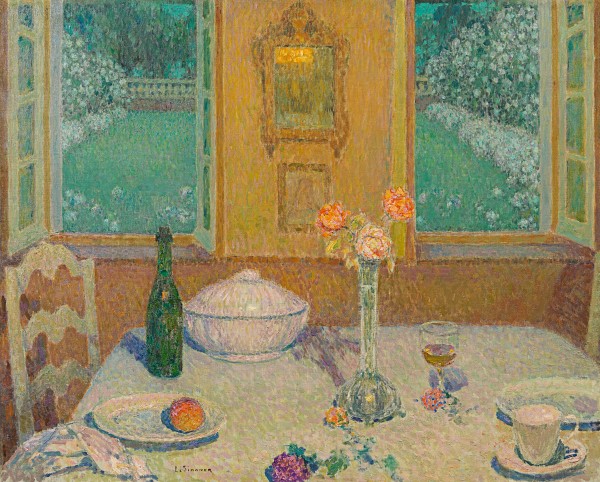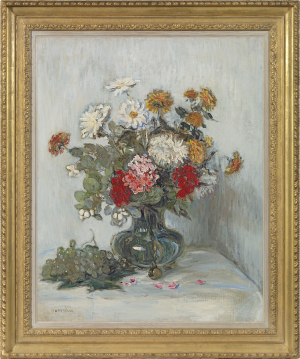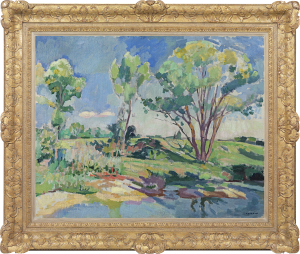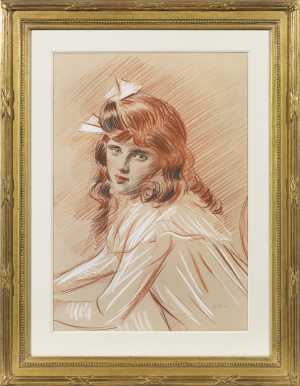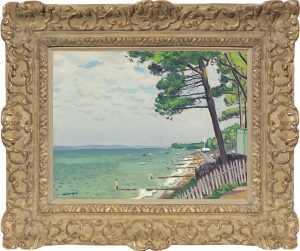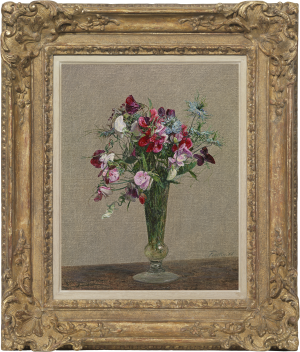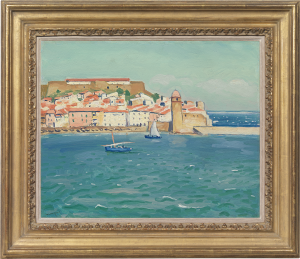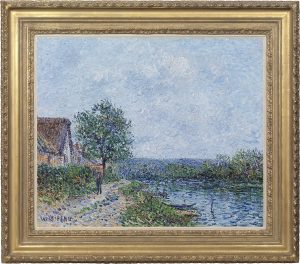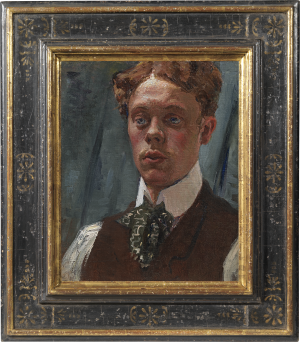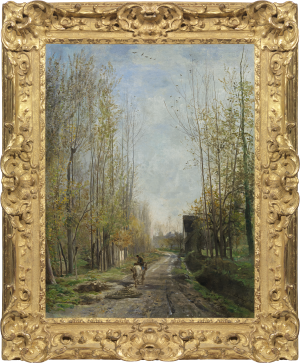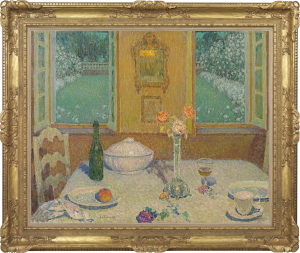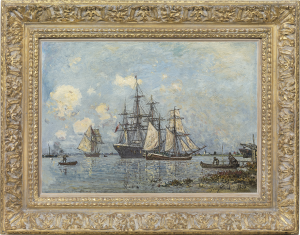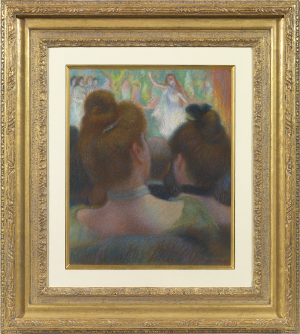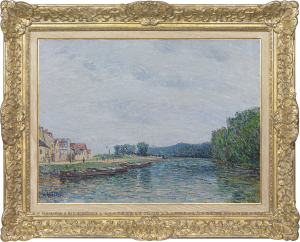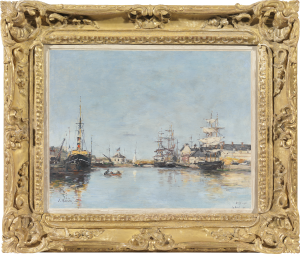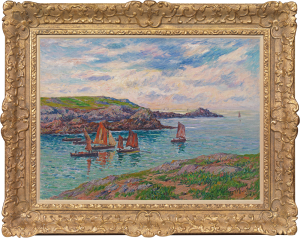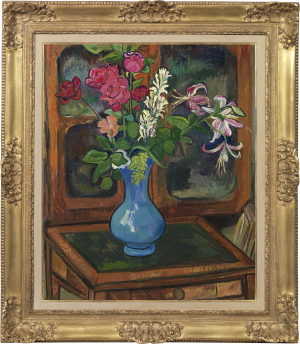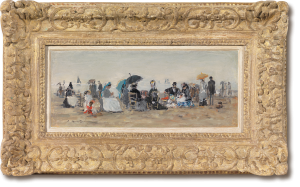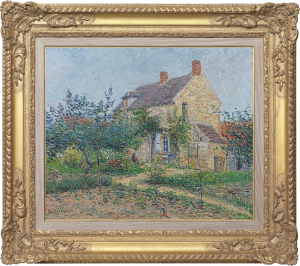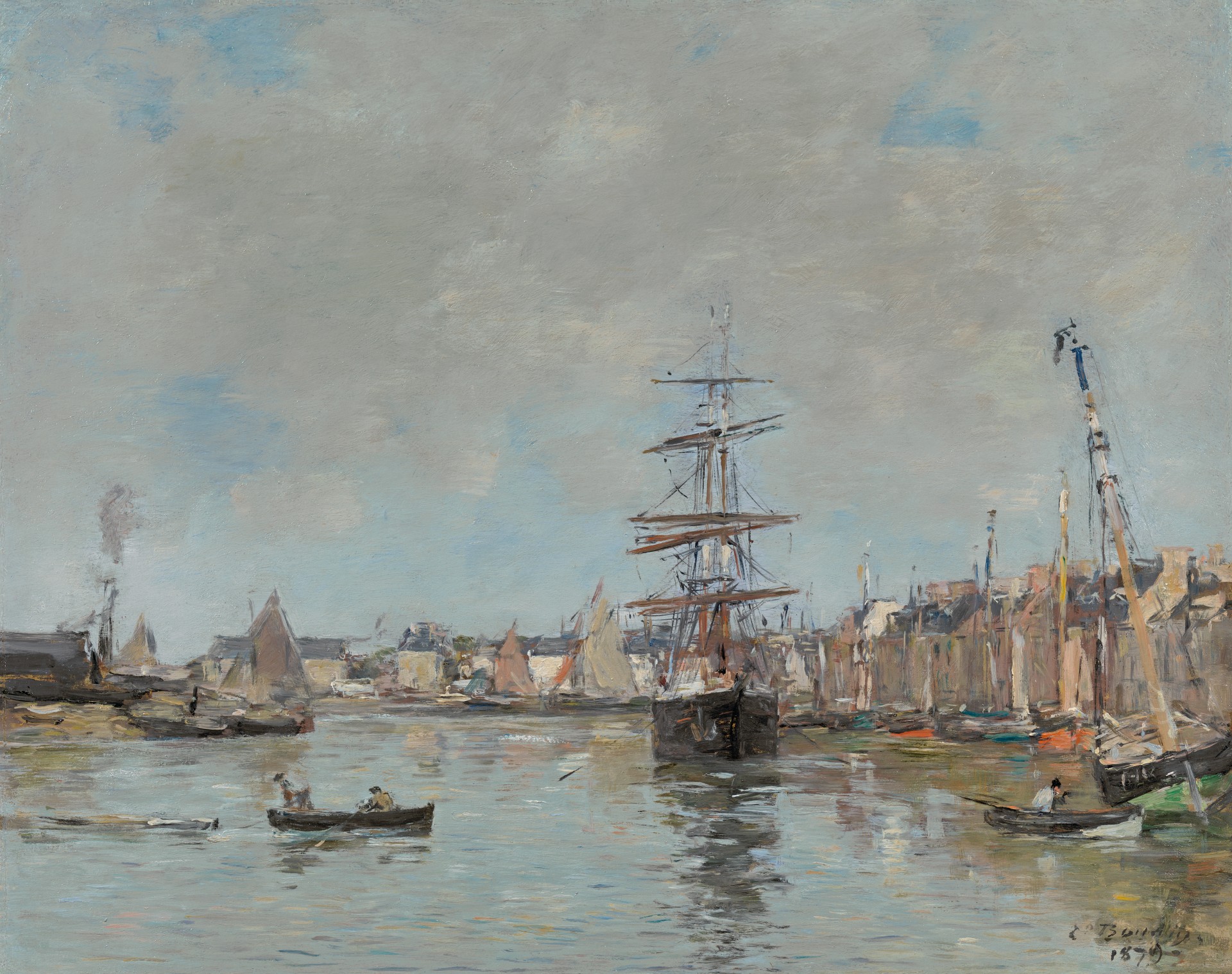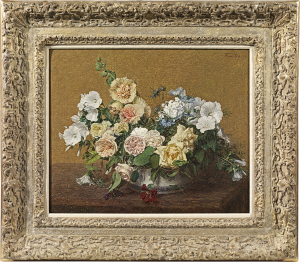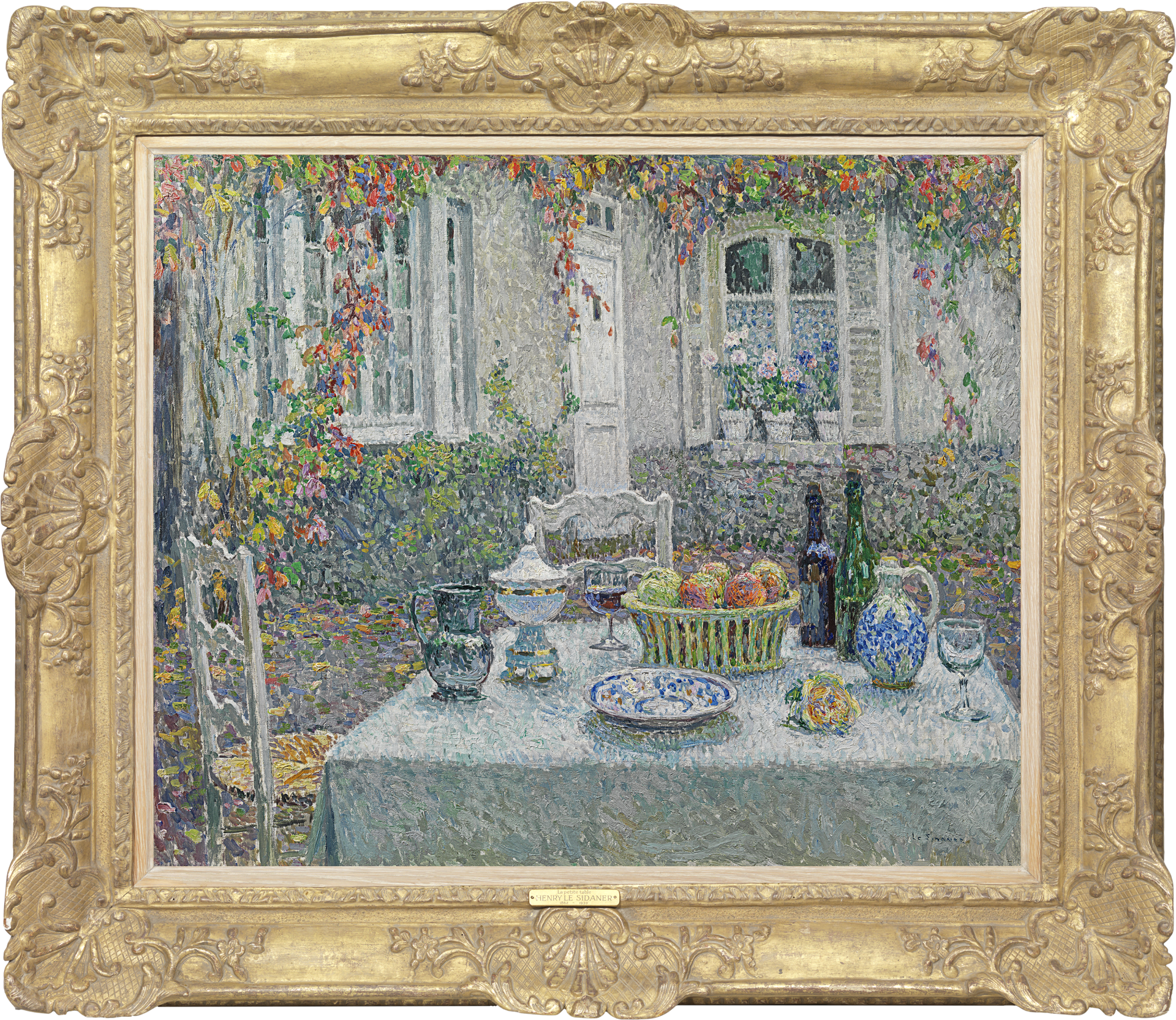Henri Le Sidaner
La petite table
Oil on canvas: 24 x 29 (in) / 61 x 73.7 (cm)
Signed lower right: Le Sidaner
This artwork is for sale.
Please contact us on: +44 (0)20 7493 3939.
Email us
HENRI LE SIDANER
Port-Louis 1862 - 1939 Versailles
Ref: CA 191
La petite table
Signed lower right: Le Sidaner
Oil on canvas: 24 x 29 in / 61 x 73.7 cm
Frame size: 33 x 39 in / 83.8 x 99.1 cm
In an antique Louis XIV carved and gilded frame
Painted in 1920
Provenance:
Galeries Georges Petit, Paris, acquired from the artist
Mr and Mrs Robert D Campbell, Pittsburgh, acquired circa 1921
by descent in a private collection, New York;
Christie’s New York, 4th November 2004, lot 285;
Richard Green Gallery, London;
Lady Steinberg
Exhibited:
Pittsburgh, Carnegie Institute, Biennale, Salle Le Sidaner, April 1921, no.196
Literature:
Y Farinaux-Le Sidaner, Le Sidaner, l’oeuvre peint et gravé, Paris 1989, p.173, no.435, illus.
In 1901 Henri Le Sidaner visited Gerberoy, about six miles north-west of Beauvais in Picardy, in search of a house round which he could develop a garden. The area had been recommended to him by Rodin. Le Sidaner was enchanted by the ‘old sleepy town, steeped in history and gentle nostalgia’[1], where William the Conqueror had fought his unruly son and which had been besieged in the Hundred Years’ War and the sixteenth century Wars of Religion. Le Sidaner rented a small cottage which in 1910 he bought and began to enlarge, adding a garden of terraces, Italianate balustrades and pavilions, overlooking half-timbered houses, cobbled streets and the rolling countryside beyond.
The house was bitterly cold and Le Sidaner spent only one winter there, retreating otherwise to the comforts of Versailles, the South of France or elegant European cities such as Venice and London. In the summers Gerberoy was his paradise and the inspiration for many paintings depicting the house and its environs. It became as important to him as Giverny to Monet or Marquayrol to Henri Martin.
This painting depicts the terrace of the main house on the late afternoon of a warm day. Le Sidaner conjures up an air of serenity and domestic content. As usual, human presence is implied rather than overt. Objects are arranged across the table with classical balance, their profiles shimmering with light. Using dabbed and blended brushstrokes, Le Sidaner allows his composition to flow through an exquisite control of tonal progressions. White and its myriad pastel shadows predominate: in the tablecloth, the chairs, the shiny covered cup and the stucco of the house beyond. Le Sidaner contrasts this with gentle touches of warm colour in the vine which frames the scene, the apples and a single yellow rose placed in the foreground, its beauty seeming to epitomize the enchantment of high summer. As the critic Albert Croquez commented, ‘Mr Le Sidaner is the painter of intimacy at its most discreet, most noble in familiar settings, and most worthy of an artist and poet’[2].
La petite table was exhibited in the Salle Le Sidaner at the Carnegie Institute, Pittsburgh in 1921. Le Sidaner had a long association with the Carnegie, exhibiting there from 1901 and being invited to sit on the jury for its International Exhibition in 1910, 1912 and 1931. In the 1920s, an era which Yann Farinaux-Le Sidaner regards as ‘a time of utmost creative expression’[3] for the artist, Le Sidaner enjoyed a distinguished reputation in the United States.
HENRI LE SIDANER
Port-Louis 1862 - 1939 Versailles
Henri Le Sidaner was born in Port Louis, Mauritius in 1862, the son of a shipbroker of Breton descent. At the age of ten his family moved to Dunkirk and in 1880, after the death of his father, to Paris. Le Sidaner entered the studio of Alexandre Cabanel at the Ecole des Beaux-Arts in 1884, but was more inspired by Manet than by his master’s dry academicism.
In 1889 he moved to Etaples, where he met the painters Eugène Chigot and Henri Duhem, who were to remain lifelong friends. Le Sidaner made plein-air paintings of Breton peasants and fishermen in a subdued palette.
In 1892 a grant allowed him to paint in Florence, Venice and Katwijk in Holland. In 1894 he settled in Paris, transferring his allegiance from the Salon to the more avant-garde Société Nationale des Beaux-Arts. In this period Le Sidaner produced paintings such as the 1896 Morning (Musée de Dunkerque) and Twilight (private collection), which combine elements of Impressionist technique with Symbolist themes. That year he signed a contract with the Mancini Gallery.
In 1898 Le Sidaner turned decisively towards the highly individual style, building on the innovations of Impressionism, that would characterise his work for the rest of his life. In 1898 he went to Bruges with his lover Camille; their son Louis was born in Paris in October, although the couple was based in Bruges for another year. In 1899 they returned to Paris and Le Sidaner became one of the group of artists represented by Galeries Georges Petit, which would give him financial stability and remain his dealer until 1930.
Le Sidaner, keen to buy a country house around which he could develop a garden, was advised by Rodin to visit the terrain near Beauvais. In 1901 he rented a cottage in the picturesque town of Gerberoy (Seine et Oise). He bought it in 1904 and in 1910 greatly enlarged the house, creating a paradisiacal garden which provided the inspiration for many of his later paintings. Le Sidaner developed a poetic style of Post-Impressionism which explores the qualities of light and objects through harmonies and counterpoint of subtle tones. After 1900 he rarely included figures in his paintings, implying human presence through his interest in depicting a community of ancient houses, or a table set for tea. Le Sidaner’s works, with their evocation of mood and emotional engagement with landscape, have affinities with the music of ‘Impressionist’ composers such as Claude Debussy.
Le Sidaner travelled in search of new motifs, wintering in Venice or London to escape the freezing cold of Gerberoy. From 1914 his family was based at a comfortable house in Versailles and summered in Gerberoy. From around 1920 his paintings employ a lighter palette and sparer, more dreamlike compositions. He was awarded the Légion d’Honneur in 1913 and the First Prize at the 1925 Pittsburgh International. Henri Le Sidaner died in Paris in 1939.
[1] Farinaux-Le Sidaner op. cit., p.14.
[2] La Revue Septentrionale, 1912, quoted in Farinaux-Le Sidaner, op. cit., pp.32-33. ‘Mr Le Sidaner est le peintre de l’intimité la plus discrete, la plus noble et son décor familiar, la plus digne d’un artiste et d’un poète’.
[3] Farinaux-Le Sidaner, ibid., p.37.

